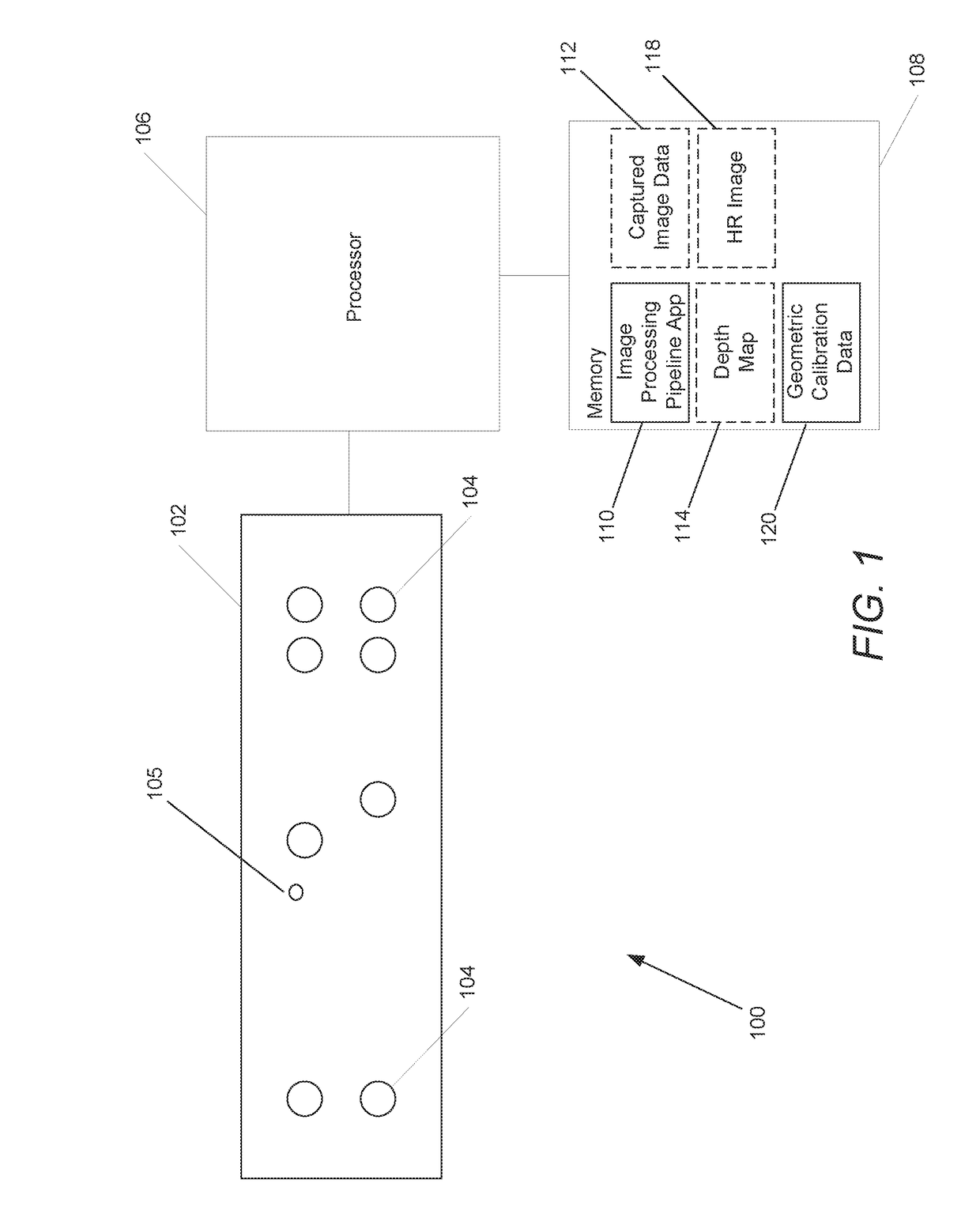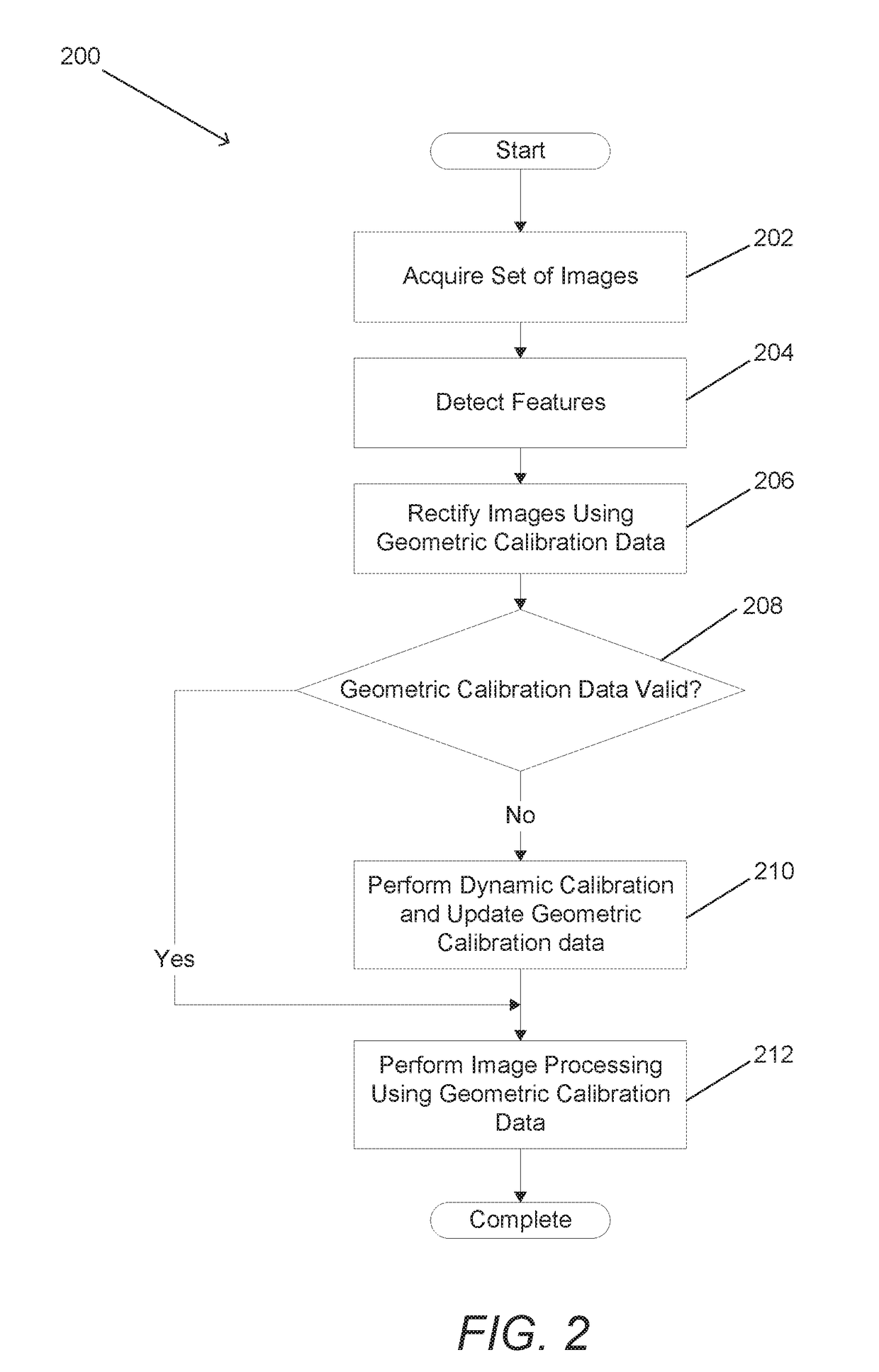Systems and Methods for Dynamic Calibration of Array Cameras
a technology of dynamic calibration and array cameras, applied in the field of camera arrays, can solve the problems of difficulty in simultaneously capturing the collection of 2d images of scenes that form a light field
- Summary
- Abstract
- Description
- Claims
- Application Information
AI Technical Summary
Benefits of technology
Problems solved by technology
Method used
Image
Examples
Embodiment Construction
[0032]Turning now to the drawings, systems and methods for dynamically calibrating camera arrays in accordance with embodiments of the invention are illustrated. Multi-camera systems are increasingly gaining popularity for various applications and their correct functionality depends on an ability to precisely register images captured by the cameras with respect to each other. The complexity of registering the various images to each other is reduced significantly by rectifying the images. This usually relies on an offline calibration process to capture information concerning the scene independent shifts of corresponding pixels that are introduced by the cameras in the array as a result of their construction (e.g. manufacturing variations in lens characteristics and / or in camera assembly), relative positions, and orientations (often referred to as the geometry of the array). In reality, the mechanical structures to which cameras in an array are mounted respond differently to various f...
PUM
 Login to View More
Login to View More Abstract
Description
Claims
Application Information
 Login to View More
Login to View More - R&D
- Intellectual Property
- Life Sciences
- Materials
- Tech Scout
- Unparalleled Data Quality
- Higher Quality Content
- 60% Fewer Hallucinations
Browse by: Latest US Patents, China's latest patents, Technical Efficacy Thesaurus, Application Domain, Technology Topic, Popular Technical Reports.
© 2025 PatSnap. All rights reserved.Legal|Privacy policy|Modern Slavery Act Transparency Statement|Sitemap|About US| Contact US: help@patsnap.com



